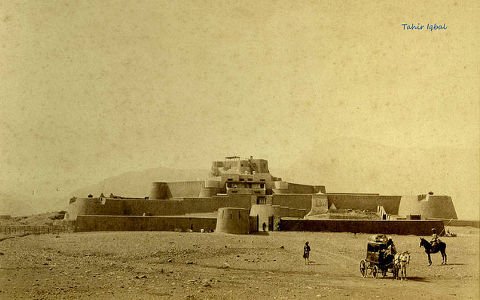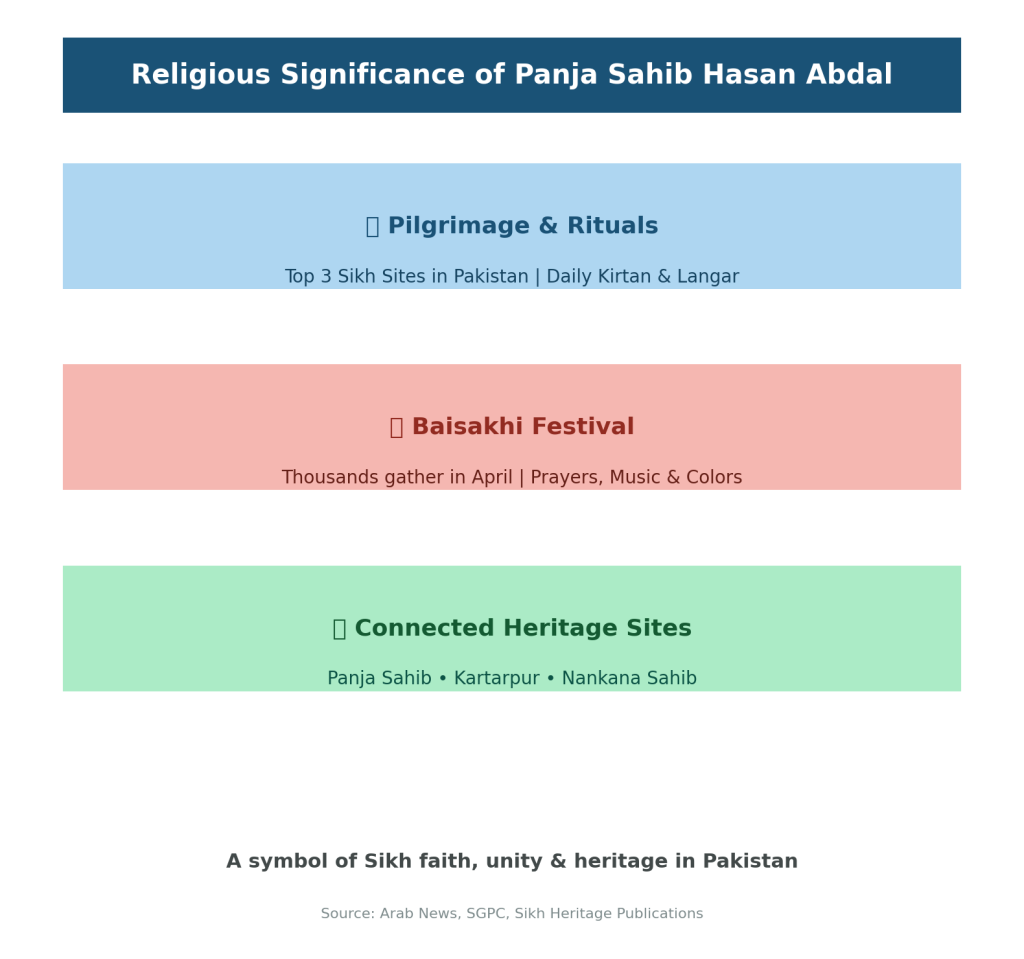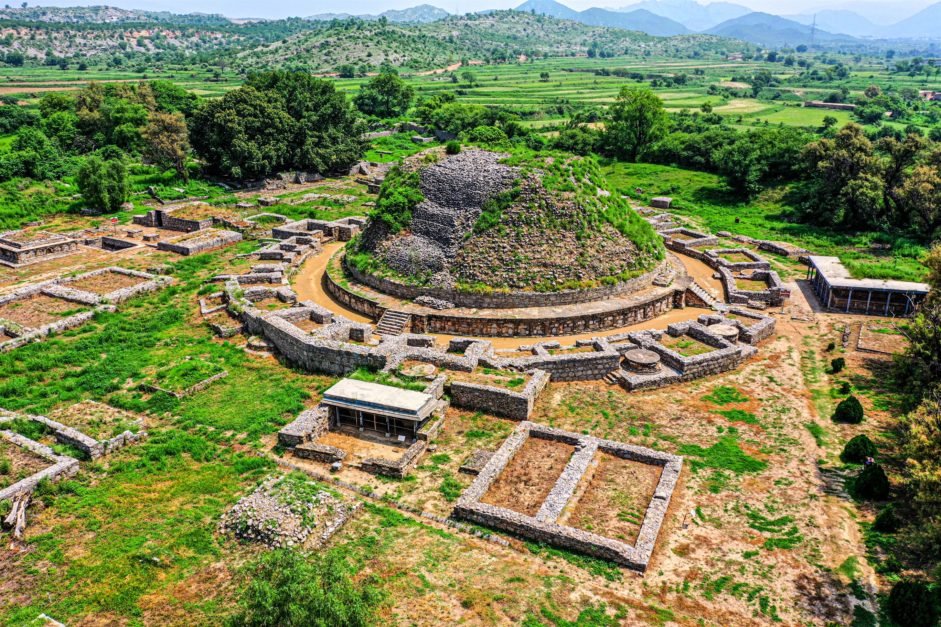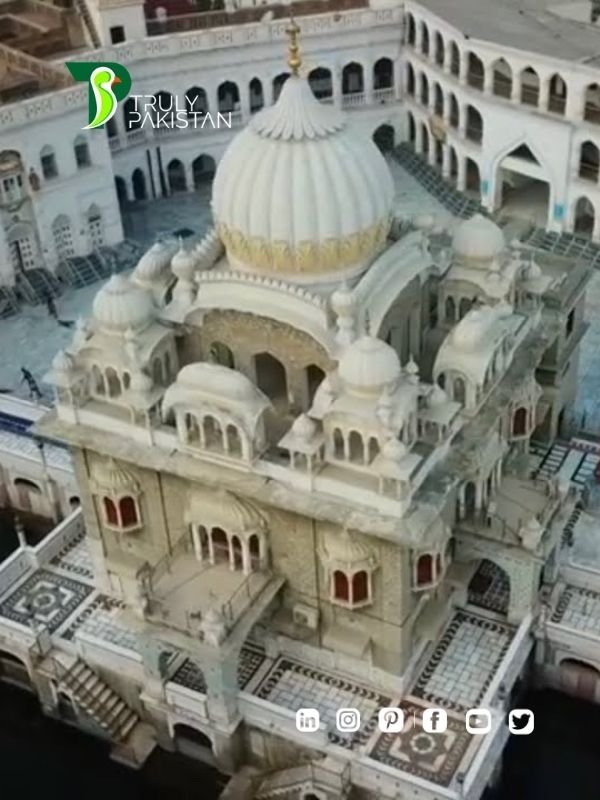Panja Sahib Hasan Abdal: Complete Guide to Pakistan’s Sacred Sikh Pilgrimage Site


Agree: If you’re searching for panja sahib hasan abdal, you already know this gurdwara is among Sikhism’s most revered sites—home to the famed handprint associated with Guru Nanak. Thousands of pilgrims gather here every year, especially around Baisakhi, to celebrate history, faith, and community.
Promise: In this guide, you’ll get the essentials—clear history, the core legend, what makes the site unique, and practical tips to plan a meaningful visit—without wading through clutter.
Preview: We’ll walk through the 1521 Hasan Abdal episode, the Wali Qandhari encounter, the sacred handprint, and later (in this guide) we’ll cover architecture, festivals, logistics, and nearby attractions. Ready? Let’s dive in. Where is Panja Sahib Hasan Abdal? Hasan Abdal, Attock District, Punjab, Pakistan—an easy day trip from Islamabad/Rawalpindi. See background on Hasan Abdal. Why is it famous? The handprint (panja) linked to Guru Nanak embedded on a boulder, central to the 1521 Hasan Abdal narrative. Overview via Discover Sikhism and Wikipedia.
Who built the present gurdwara? Developments attributed to Hari Singh Nalwa during the Sikh Empire era (sources: Hari Singh Nalwa; SikhRI). Best time to visit Baisakhi (April) for major celebrations; otherwise weekdays for quieter reflection. Recent festival coverage: Arab News. Who manages Sikh shrines in Pakistan? The Evacuee Trust Property Board (ETPB). See ETPB’s gurdwaras list.
Table of Contents
The Historical Legend of Panja Sahib Hasan Abdal
Guru Nanak’s Journey to Panja Sahib Hasan Abdal (1521)
Accounts place Guru Nanak and his companion Bhai Mardana at Hasan Abdal around 1521 CE during the Guru’s travels (udasis). Multiple sources outline this stop as a pivotal episode that highlights humility, divine grace, and service to humanity. For concise overviews, see Discover Sikhism and the summary on Gurdwara Panja Sahib.
Why it matters: the Hasan Abdal visit anchors Panja Sahib’s identity—not just as a beautiful gurdwara, but as a living story of compassion, remembrance, and reconciliation.
The Encounter with Wali Qandhari at Panja Sahib Hasan Abdal
Local tradition recounts a tense exchange with a mystic known as Wali Qandhari. When water was withheld from thirsty followers, Guru Nanak is said to have brought forth a spring, underscoring service over ego. The narrative is detailed in community resources like SikhiWiki and contextualized historically in broader references on Baba Wali Kandhari.
- The motif: Compassion and humility triumph over power.
- The setting: Hasan Abdal’s hills and springs—still central to today’s pilgrimage experience.
The Sacred Handprint of Panja Sahib Hasan Abdal: Meaning & Sources
The handprint (panja) impressed on a boulder is venerated by Sikhs worldwide. Devotees interpret it as a sign of divine intervention; historians catalog it within early Sikh sacred narratives. For balanced context, compare the spiritual lens via Discover Sikhism and summary treatments on Wikipedia, alongside institutional references from SGPC.
Tip: When you visit, approach the boulder respectfully and follow any posted guidelines. If you’re planning a first trip, bookmark a practical primer on Sikh heritage in Pakistan and our upcoming section on visas, transport, and etiquette.
Architecture of Panja Sahib Hasan Abdal
Hari Singh Nalwa’s Construction and Vision


The current gurdwara owes much of its expansion to Hari Singh Nalwa, a celebrated general of the Sikh Empire. Historical records note that under his direction in the early 19th century, the shrine was developed into a formal gurdwara complex. The goal: to preserve the sacred boulder and create a place where thousands could congregate during festivals. Sources like Wikipedia and SikhRI highlight his role not just as a military leader but also as a patron of Sikh heritage.
Mughal-Sikh Fusion: Domes, Arches, and Courtyards
Step inside Panja Sahib and you’ll notice the blend: Mughal arches, domes reminiscent of Indo-Islamic design, and Sikh-style frescoes. This architectural fusion is a visual reminder of Punjab’s layered history. The large prayer hall, with its airy courtyards, continues to host daily congregations. Scholars categorize this style as a Mughal-Sikh hybrid—drawing from both local Islamic motifs and Sikh symbolism (Sikh Architecture overview).
- Domes: Symbolic of the heavens, echoing Mughal design.
- Arches: Grand entryways in Indo-Saracenic style.
- Frescoes: Narrative art depicting Sikh history.
The Sarovar and Sacred Boulder: Symbolism and Design
The sarovar (sacred pool) inside Panja Sahib offers a reflective setting for pilgrims. Many bathe here before prayer, a ritual act of purification. At the heart lies the revered boulder bearing Guru Nanak’s handprint. The pool’s symmetry and marble embankments recall Mughal water architecture, while its spiritual function aligns with Sikh emphasis on community gathering and reflection. Conservationists note ongoing preservation work to maintain these features (Sikh Foundation).
Religious Significance for Sikh Pilgrims


Pilgrimage Importance and Daily Rituals
For Sikhs worldwide, Panja Sahib Hasan Abdal is among the top three pilgrimage sites in Pakistan alongside Nankana Sahib and Kartarpur. Daily kirtan (devotional singing) and langar (community kitchen) underscore the gurdwara’s living traditions. Visitors—Sikh or otherwise—often describe the experience as deeply communal, rooted in values of equality and service.
Baisakhi Festival at Panja Sahib Hasan Abdal
Baisakhi (April) is the highlight, attracting thousands of pilgrims. In 2025, reports noted over 5,800 Sikh visitors from India and abroad participating in prayers, processions, and cultural events (Arab News). The gurdwara becomes a vibrant hub of colors, music, and shared meals, echoing centuries of tradition.
Connection to Other Sikh Heritage Sites in Pakistan
Panja Sahib forms a triad with Kartarpur Sahib and Nankana Sahib, making Pakistan home to some of the most significant Sikh pilgrimage routes. Together, these sites trace Guru Nanak’s life and the origins of Sikhism, drawing pilgrims from across the globe and reinforcing Pakistan’s role in Sikh religious geography.
Visiting Panja Sahib Hasan Abdal: A Practical Guide
How to Travel from Islamabad, Rawalpindi, and Lahore
Hasan Abdal is just 45–48 km from Islamabad and Rawalpindi, roughly a one-hour drive along GT Road. From Lahore, expect a 4-hour drive. Public buses connect major cities, but most pilgrims prefer group tours or private vehicles. Tour companies like Apricot Tours and Zeb Travels offer dedicated Sikh yatra packages.
Visa and Entry Requirements for International Pilgrims
Indian citizens require a special pilgrimage visa issued under bilateral agreements, usually coordinated during Baisakhi and other major events. International Sikhs can apply via Pakistan’s online visa portal, selecting “religious tourism” as their category (Pakistan Interior Ministry). Always check updated advisories before traveling.
Accommodation, Facilities, and Accessibility
The gurdwara complex includes dormitories and guest rooms managed by the ETPB. During peak festivals, overflow accommodation is arranged in nearby towns. Facilities include free langar, medical assistance, and security arrangements. While wheelchair access is possible in main courtyards, conservation reports highlight areas that remain less accessible.
Cultural and Historical Impact
Panja Sahib’s Role in Pakistan–India Relations
The significance of panja sahib hasan abdal goes beyond faith. Every year, India and Pakistan coordinate for Sikh pilgrims to cross borders and attend festivals here. These exchanges, though small in number compared to overall populations, act as confidence-building measures in otherwise tense bilateral relations. The shrine thus stands not only as a religious symbol but also as a bridge of diplomacy and cultural exchange (The Express Tribune).
Modern Pilgrimage Statistics and Global Sikh Community
According to 2025 figures, more than 6,500 pilgrimage visas were issued, with 5,800 arrivals recorded for Baisakhi at Panja Sahib. This influx included groups from the UK, Canada, and Malaysia alongside Indian yatris (Arab News). Beyond the numbers, these annual gatherings reinforce global Sikh identity and sustain Panja Sahib’s role in diaspora memory.
Conservation Efforts and Heritage Protection
The Evacuee Trust Property Board (ETPB) is responsible for maintenance, but NGOs and Sikh organizations frequently raise concerns about structural conservation. Efforts include marble restoration, water management for the sarovar, and fresco preservation. Reports by the Sikh Foundation emphasize the need for sustainable funding and heritage awareness to protect this living monument for future generations.
Nearby Attractions Around Hasan Abdal
Exploring the UNESCO World Heritage Site of Taxila


Just a 20-minute drive from Panja Sahib lies Taxila, a UNESCO-listed archaeological treasure featuring Buddhist monasteries, stupas, and artifacts dating back over 2,000 years. Many pilgrims combine their religious visit with a cultural day trip to explore these ancient ruins.
Wali Qandhari Shrine and Local Legends
On the hill above Hasan Abdal stands the shrine of Wali Qandhari, the mystic linked with the Panja Sahib legend. Pilgrims and tourists often hike the trail to visit his resting place, adding a multi-faith dimension to the area. The coexistence of Sikh and Muslim sacred sites in such proximity offers a unique cultural experience (Pristine Travels).
Other Attock District Natural and Cultural Sites
Beyond Hasan Abdal, Attock District offers more to explore: the Indus River at Attock Bridge, historic Mughal caravanserais, and scenic hill drives. These attractions make a Panja Sahib pilgrimage not just a spiritual journey but also a gateway to discovering northern Punjab’s cultural landscape (Oct Resort).
FAQ on Panja Sahib Hasan Abdal
What is the story behind Guru Nanak’s handprint at Panja Sahib?
According to Sikh tradition, Guru Nanak pressed his hand on a boulder to stop it from rolling down a hill during his encounter with Wali Qandhari. The imprint remains visible today and is revered as a miracle.
How can Indian citizens visit Panja Sahib Hasan Abdal?
Indian Sikhs apply for special pilgrimage visas under agreements managed by both governments, usually during major festivals like Baisakhi. Applications are coordinated through the Shiromani Gurdwara Parbandhak Committee (SGPC) and Pakistan’s ETPB.
What are the opening hours and dress code requirements?
The gurdwara is open daily from sunrise to sunset. Modest dress is required: head covering (scarf or turban) and removal of shoes before entering prayer halls.
Can Muslims and non-Sikhs visit Panja Sahib Hasan Abdal?
Yes, Panja Sahib is open to all respectful visitors regardless of faith. Visitors are encouraged to follow gurdwara etiquette: cover the head, wash hands and feet, and sit respectfully in the main hall.
When is the best time to visit Panja Sahib for festivals?
Baisakhi in April is the most vibrant time, but Gurpurabs and other Sikh commemorations are also observed. For quieter visits, weekdays outside festival season are recommended.
What facilities are available for pilgrims?
The gurdwara offers free langar (community meals), basic accommodation, washrooms, medical aid, and security. During peak festivals, extra facilities and volunteer services are arranged for international yatris.
Conclusion: Plan Your Pilgrimage to Panja Sahib Hasan Abdal
The story of panja sahib hasan abdal isn’t just about a handprint on a boulder—it’s about faith, humility, and heritage that has stood the test of centuries. From Guru Nanak’s miraculous encounter with Wali Qandhari to the grand architecture shaped by Hari Singh Nalwa, and from annual Baisakhi gatherings to everyday prayers, Panja Sahib continues to unite Sikhs and welcome people of all faiths.
Whether you are a pilgrim seeking spiritual connection, a historian curious about Mughal-Sikh heritage, or a traveler exploring Punjab’s cultural landscape, Panja Sahib Hasan Abdal offers an unforgettable experience.
Call to Action: Plan your pilgrimage today. Check visa requirements, prepare for Baisakhi or a weekday visit, and immerse yourself in the living history of one of Sikhism’s holiest shrines.
About the Author
Author: ZunNurain Khalid — Travel & Tourism Specialist, Founder of ExploreX Pvt. Ltd., and advocate for sustainable tourism in Pakistan. With over a decade of experience in digital marketing and destination branding, ZunNurain has worked extensively on promoting Pakistan’s natural and cultural heritage.
References
- SGPC – Gurdwara Panja Sahib Hasan Abdal
- Discover Sikhism – Gurdwara Sri Panja Sahib
- Wikipedia – Gurdwara Panja Sahib
- Arab News – Sikh Pilgrims in Pakistan
- Sikh Foundation – Heritage in Pakistan
- Evacuee Trust Property Board (ETPB)
- The Express Tribune – Baisakhi Mela
- Wikipedia – Hasan Abdal
- Wikipedia – Hari Singh Nalwa
- SikhRI – Hari Singh Nalua

